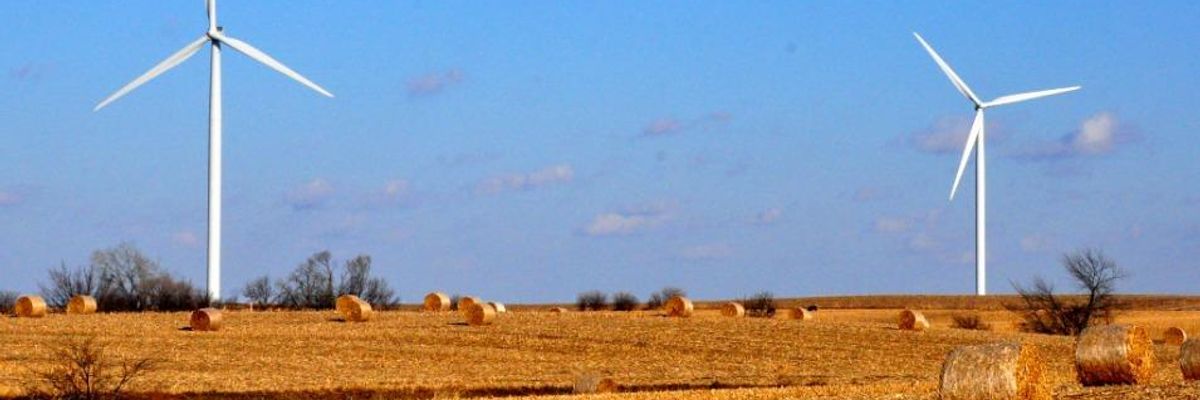Last week, the U.S. DOE published its Wind Vision report, outlining the potential for wind to provide up to 35%our electricity by mid-century. The report is a valuable contribution to energy decisions facing Congress and every state in the union. Will they risk a continued reliance on coal and gas or embrace the future offered by renewable energy?
An early leader in wind development, Texas gave the country the President who set our first goal for wind power. In his 2006 State of the Union President Bush set a goal of 20% wind power by 2030. The U.S. is well on its way to meeting that goal, having tripled our capacity for wind energy since 2008. The proliferation of wind farms around the nation is due to advances in technology and state and federal policy incentives. The New York Times reported last fall that the changing economics of the energy market has made the cost of wind power competitive.
Yet, many U.S. electric utilities are doubling down on natural gas to generate power as they retire aging and polluting coal plants. Just-released UCS research indicates that total natural gas use will increase by nearly 18 percent between 2013 and 2040, with the power sector representing the largest share of this increase. Under this business-as-usual scenario, natural gas prices for the power sector are more than twice as high in 2040 than in 2013 and average consumer natural gas prices would nearly double over the same time period. A far better bet is to greatly expand the use of renewable energy and energy efficiency.
The new Wind Vision report provides a roadmap to scaling up wind to be an even more viable alternative to natural gas and other fossil fuels. Its analysis of the benefits of greater wind energy production demonstrates why states should look to renewable sources like wind to comply with the new power plant carbon standard. The EPA's draft Clean Power Plan, released last June, establishes state-by-state carbon emissions targets and would reduce national electricity sector emissions by an estimated 30 percent below 2005 levels by 2030.
Use of wind energy in 2013 has already reduced power-sector carbon dioxide emissions by 115 million metric tons. Achieving the Wind Vision of 35% of the nation's electric power being generated by wind by 2050 would reduce our reliance on fossil fuels and cutting carbon emissions by 14%.
The national economic benefits are significant as well. The DOE report estimates that achieving the Wind Vision would create an estimated 600,000 jobs and generate $1 billion in lease payments. These kinds of results are consistent with what our research has shown is possible on a state level. For example, a proposed Minnesota renewable electricity standard of 40% renewables by 2030 would generate $9 million in lease payments to landowners that host wind farms.
Accelerating the development and deployment of wind will require vision on the part of elected officials at all levels. The Production Tax Credit, a federal incentive that provides financial support for the development of renewable energy facilities, has been a key factor in the growth of the wind industry to date, but was allowed to expire last year. Permanent incentives in the tax code and the implementation of EPA's Clean Power Plan will drive costs of wind production down as the industry scales up and innovates. Rather than working to block the Clean Power Plan, Congress would be wise to continue the bipartisan tradition of supporting clean energy and help make the wind vision a reality. State officials can lead the way by extending and strengthening renewable energy standards and embracing the opportunity to reshape their state's energy future.
The new DOE Wind Vision helps make clear just how possible it is for wind energy to play a major role in our clean energy future. Bringing that vision to life will require us to find and support the leadership we need on this issue.
